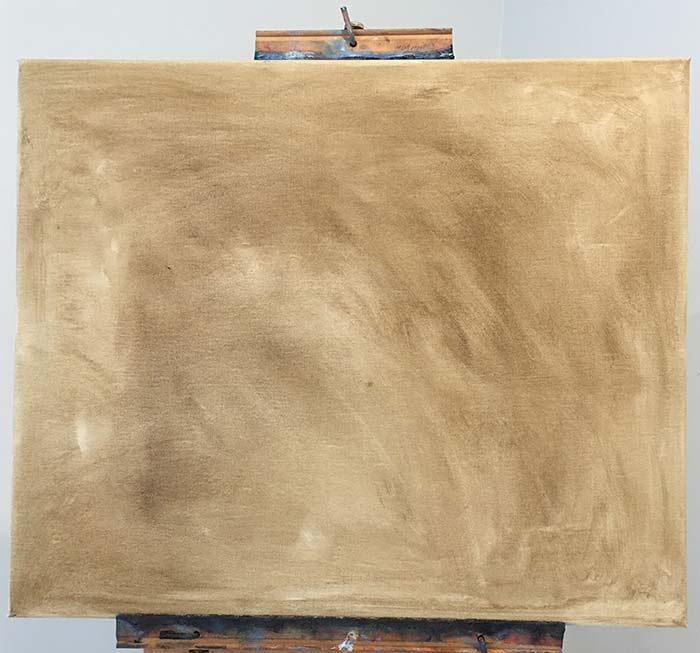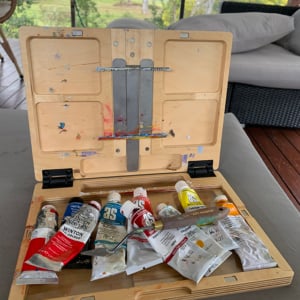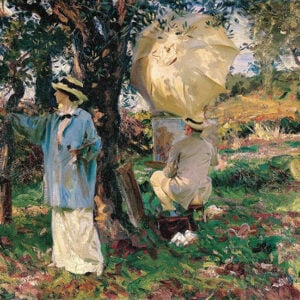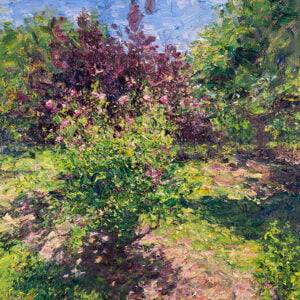I previously wrote about 11 things you should do after you finish your painting, so I thought it only makes sense to also write about what you should do before you start.
I am a firm believer that some of the most important work happens before you even pick up your brush. Below are some of the things I usually do before I start a painting which you might want to adopt for yourself. In this post, I cover:
- Decide What to Paint
- Take Reference Photos (Unless Painting From Life)
- Analyze the Subject
- Prepare the Supplies
- Stop Procrastinating!
- Additional Readings
- Want to Learn More?
- Thanks for Reading!
Decide What to Paint
I put a considerable amount of effort into deciding what to actually paint. I am always actively looking for new painting inspiration and I try to carry a camera on me as often as possible for when inspiration strikes.
When I think of painting inspiration, I am always reminded of this quote by Pablo Picasso:
“Inspiration exists, but it has to find us working.”
Here are some of the things I look for when deciding what to paint:
- Strong composition.
- Favorable light.
- Interesting color harmony.
- That X-factor which I really want to paint. This could be the way light is bouncing off an object, an interesting arrangement of clouds or a pleasing color harmony. It is that key feature which makes me want to paint the scene.

Take Reference Photos (Unless Painting From Life)
Once you have decided what to paint, it is time to take some reference photos (provided you are not painting from life). I wrote about taking the perfect reference photo in this post.
Here are some tips for taking reference photos:
- Take as many photos as you can. You can sort through them back in the studio. Sometimes, it is also useful to have multiple photos of the same subject from various perspectives.
- Do not try to take the perfect photo! You are taking photos for painting inspiration, not to show off your photography skills.
Even if you are painting from life, it may be handy to have reference photos in case you need to finish the painting back in the studio.

Analyze the Subject
Before picking up my brush, I find it useful to do some pre-painting analysis of the subject. This helps me develop an action plan for the painting. My best paintings are usually those which I start with a firm vision and action plan in mind.
Here are some of the processes I do to analyze my subject:
- Try to improve on the composition by cropping unnecessary details.
- Convert the reference photo to grayscale to clearly see the darkest and lightest values.
- Identify the dominant color harmony using a color checker.
- Zoom-in to see any finer details which I should include in the painting.
I discuss many of these techniques in more detail in the Painting Academy.
Please note that I do not do all of these things before starting every painting. There are certainly times when I just want to pick up a brush and wing-it.
Prepare the Supplies
Nothing kills my painting inspiration more than running out of supplies mid-way during the painting process. So before starting, I do a quick stocktake of the supplies I have and the supplies I will need.
These are the questions I ask myself:
- Are all my brushes cleaned, ready to paint and in a good condition?
- Do I need any specialty brushes for the painting?
- What colors do I need for the painting and am I able to mix them all using my current tubes of paint? If not, what colors do I need to purchase?
- Do I have enough solvent (if oil painting)?

Stop Procrastinating!
The last but most important point in this post is to stop procrastinating and just start! Here are some tips to stop you from procrastinating:
- Place your canvas on the easel. The blank canvas sitting on your easel should prompt you to get started with the painting.
- Stain your canvas. This will help you warm up your hands and get some paint on the canvas. I am amazed at how much this helps me get over procrastination.
- Do a quick study to prepare for the main painting. This is a great way to combat any potential issues or hesitations you have.

Additional Readings
11 Things To Do After You Finish A Painting
How To Choose The Perfect Reference Photo To Paint From
Want to Learn More?
You might be interested in my Painting Academy course. I’ll walk you through the time-tested fundamentals of painting. It’s perfect for absolute beginner to intermediate painters.
Thanks for Reading!
I appreciate you taking the time to read this post and I hope you found it helpful. Feel free to share it with friends.
Happy painting!
Dan Scott

Draw Paint Academy







Enjoyed your directions. Thank you for sharing!
Thank u.Just trying to start again after many years.
Great information! I need the push to get started again. I do a lot of that “procrastinating.”
I love to paint !
Thanks!
thanks Dan lollll just put a blank canvas on the easel and it is much better to get motivated to paint
I have trouble to find which brush I need to paint. I always follow your ideas. many thanks .
Fleur
I am very excited about this porgram. But will not be able to
Buy the book till march.
Thanks
Deborah pena
Dan,
Took a two lessons to heart; don’t try to include everything but clean up and simplify. Don’t try to make it so real that it’s a photographic copy but make it art. Getting back into oils after almost forty years ;What Fun!
Fred
Thank you for the inspiration!